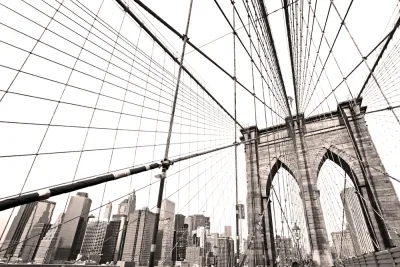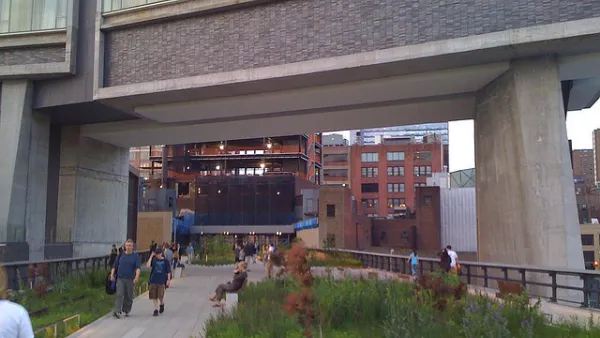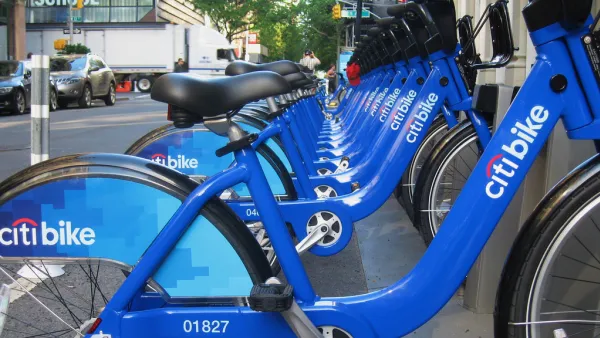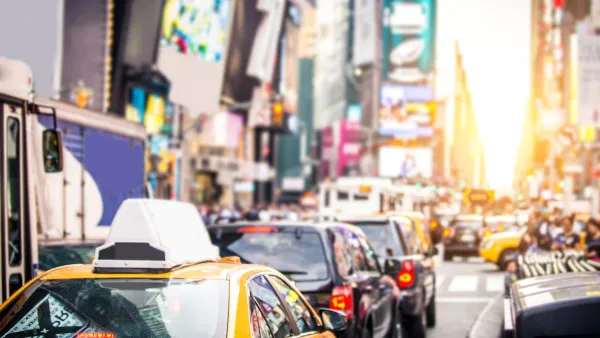"Manhattanization," a pejorative term coined in San Francisco half a century ago by opponents of tall buildings, needs to be rethought, writes San Francisco Chronicle's Native Son columnist, Carl Nolte, upon return from a weekend trip to New York.

It may have been a short trip, but Carl Nolte returned with lots of thoughts based on comparing what he saw in New York City, particularly Manhattan, with what he left in San Francisco.
New York City seems to be a little cleaner, a little safer, and a lot less stuck on itself than our fair city. They’ve cleaned up their act in New York. In San Francisco we’re still talking about it.
The Big Apple still needs improvement. In the airport comparison, JFK loses to SFO, writes Nolte. And the taxi "ride into the city is dreary, past sad neighborhoods in Queens, past cemeteries, into the mother of all traffic jams, a prelude to an ancient tunnel, full of fumes."
But upon exiting the tunnel into midtown Manhattan, Nolte is impressed with what he sees, noting how the urban environment has improved since his last trip two years ago. Comparisons to the City by the Bay were inevitable.
There were homeless people hanging around with the same sad signs you see in San Francisco, but fewer of them. Other panhandlers were dressed as Batman and Minnie Mouse or the Statue of Liberty. We didn’t see people shouting crazy stuff the way they do at Powell and Market in Everybody’s Favorite City.
"We felt like refugees from the city where Anything Goes," writes Nolte, graphically recounting some of the unsightly daily street scenes that San Franciscans have had to adapt to but were absent in Manhattan.
Favorite place visited
We walked all over. And the best walk was on the High Line, a decommissioned elevated railroad freight line that has been turned into a park in the air, wandering through and above an old industrial district.
Now it’s a promenade, a park, a showplace, with pieces of the old freight tracks still in place, a reminder of past days. It wanders through old meatpacking plants, and next to glass-walled condos.
However, it's what the High Line represents, in addition to the enjoyment of walking along an old freight rail line above bustling streets in the rapidly gentrifying neighborhood of West Chelsea, that resonated with the San Francisco columnist.
“No neighborhood in New York has changed identities so profoundly as this stretch of the West Side,” Justin Davidson [architecture and classical music critic at New York magazine] writes in “Magnetic City,” his new book about New York. The High Line’s story, he writes, “is far from over, because the city that changes around it is a show that never folds.
Correspondent's note: Almost seven years earlier, Nolte's colleague, urban design critic John King, reported on his trip to New York, and came to the same conclusion as Nolte in his aptly named piece, "Our city could use a little 'Manhattanization" (posted here).
FULL STORY: Local City afraid of change could learn much from NY

National Parks Layoffs Will Cause Communities to Lose Billions
Thousands of essential park workers were laid off this week, just before the busy spring break season.

Retro-silient?: America’s First “Eco-burb,” The Woodlands Turns 50
A master-planned community north of Houston offers lessons on green infrastructure and resilient design, but falls short of its founder’s lofty affordability and walkability goals.

Delivering for America Plan Will Downgrade Mail Service in at Least 49.5 Percent of Zip Codes
Republican and Democrat lawmakers criticize the plan for its disproportionate negative impact on rural communities.

Test News Post 1
This is a summary

Test News Headline 46
Test for the image on the front page.

Balancing Bombs and Butterflies: How the National Guard Protects a Rare Species
The National Guard at Fort Indiantown Gap uses GIS technology and land management strategies to balance military training with conservation efforts, ensuring the survival of the rare eastern regal fritillary butterfly.
Urban Design for Planners 1: Software Tools
This six-course series explores essential urban design concepts using open source software and equips planners with the tools they need to participate fully in the urban design process.
Planning for Universal Design
Learn the tools for implementing Universal Design in planning regulations.
EMC Planning Group, Inc.
Planetizen
Planetizen
Mpact (formerly Rail~Volution)
Great Falls Development Authority, Inc.
HUDs Office of Policy Development and Research
NYU Wagner Graduate School of Public Service





























